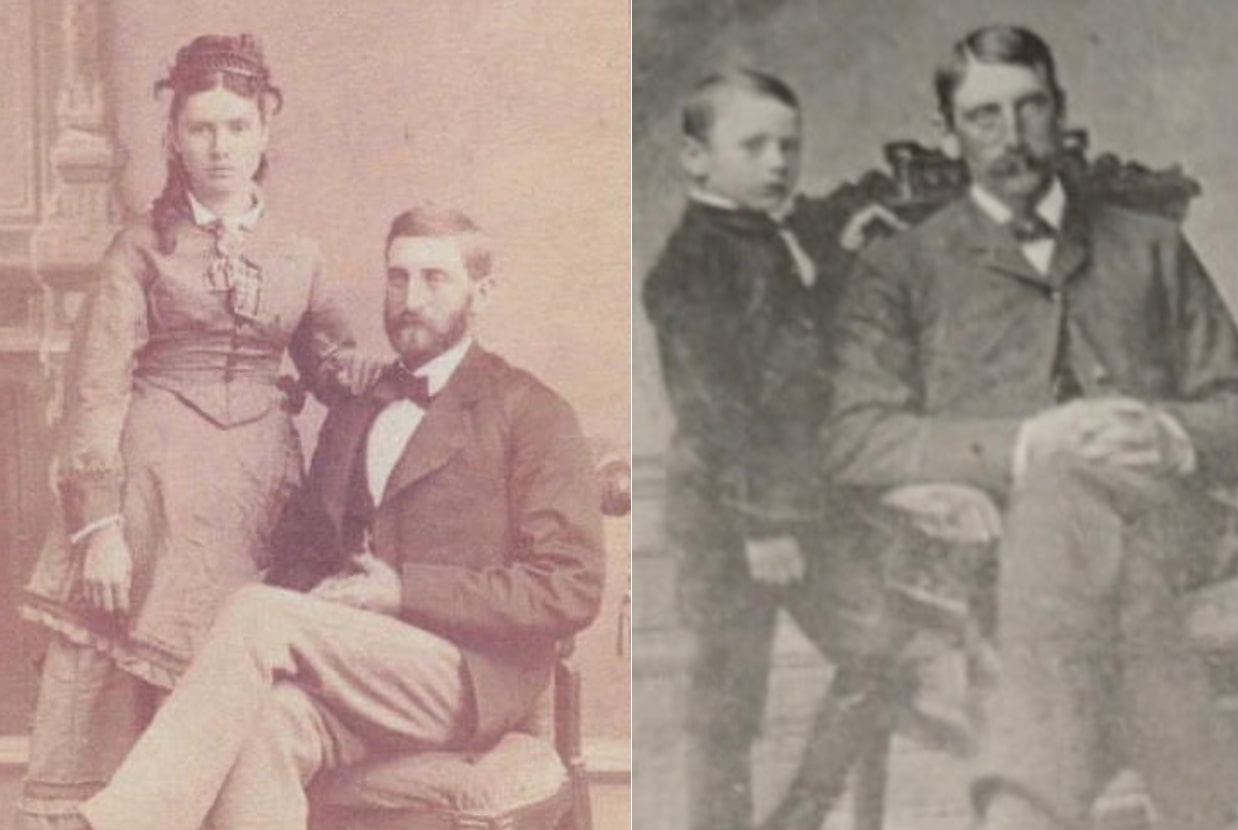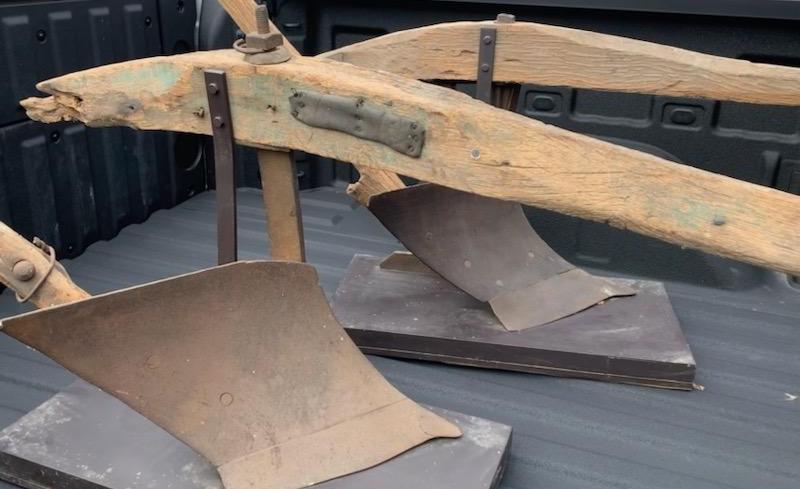Holy Grails of US History, Two Plows Forged by John Deere Hide on Iowa Farm

Twin grails that changed U.S. history—a pair of steel, moldboard plows crafted in the flesh by the hands of John Deere and bought directly from the American titan’s Illinois shop in 1839 and 1840—sit behind unassuming garage doors on Sam Shaff’s Iowa farm.
Purchased by Shaff’s great-great grandfather, Heman Shaff, the 1839 specimen was the first Deere plow on Iowa farmland, and possibly the first to break dirt on the far side of the Mississippi River during America’s westward expansion.
“My family bought the plows directly from John Deere,” Sam Shaff says, “and the accounts I was told all said that Deere was an extremely busy, but very nice gentleman. The first plow cost $24, and all the neighbors wanted a turn to use it.”
The Plow Wonder
On 1,000 acres of corn and soybeans in eastern Iowa’s Clinton County, a stone’s throw from the Mississippi River outside Camanche, the oldest continuous farm in Iowa is overseen by seventh-generation producer Sam Shaff. “Like with a lot of people, my family history gets richer the older I get.”
However, Shaff’s modesty can’t hide an exceptionally deep farm and family story.
In 1732, the year of George Washington’s birth, the Shaff family departed Germany for colonial shores, eventually taking up residence in Wayne County, New York. A century later, in 1837, beckoned by westward opportunity, 19-year-old Heman Shaff loaded his widowed mother, two sisters, and a younger brother into two covered wagons—generally bound for the vast, five-state expanse of Wisconsin Territory, but specifically zeroed on what would become the state of Iowa.

“He reached Illinois and found great farmland, but he knew there was land opening across the river,” recounts Shaff, 70. “He built a cabin in Illinois, left behind his mother and sisters, and crossed the river into Iowa to scout some farmland.”
On Dec. 13, 1837, Heman Shaff registered a claim on 240 acres of black dirt near the fork of the Mississippi and Wapsipinicon rivers in present-day Clinton County. With the clock ticking on Iowa statehood, Heman had a small window of time to pay for the property. Alongside his brother, Heman headed north, intent on earning enough coin to cover the farmland note.
“He had some really good horses, so he and his brother went to Chicago and became teamsters for a while, saving their money,” Shaff explains.
At the end of 1838, Heman moved the Shaff family across the Mississippi River, either by skiff or ferry, and broke virgin soil on 240 acres of Camanche dirt. Prior to his departure from Illinois, or just after his arrival in Iowa, Heman heard accounts of a plow wonder made by an innovative blacksmith—Mr. John Deere.
Magical Moldboard
In the age of American plow wars, westward expansion spurred ever-greater demand for a better implement, yet the plow void remained. In 1836, facing bankruptcy and down to his last $73, John Deere, 32, bounced out of Vermont and set up a blacksmith business in northwest Illinois’ Grand Detour. In 1837, inside a 26’-by-31’ shop on the Rock River, Deere solved the plow riddle. His solution? Sleek, polished steel.

Deere built a self-scouring steel plow—an answer to the drag of cast iron and sticky prairie soils of the Midwest. Although production numbers soon would explode, Deere initially crafted plows according to individual demand. In 1837, he produced a single steel plow. In 1838, he made two plows. In 1839, he quintupled production to 10 plows. And that same year—1839—Heman Shaff crossed the Mississippi River, rode 60 miles, and knocked on Deere’s door, anxious to buy one of 10 magical moldboards.
Forever Steel
“Twenty-four dollars,” Shaff says. “Heman went all the way to Grand Detour and bought the plow personally from Deere.”
Loaded onto his wagon, Heman returned to Camanche with the first Deere steel moldboard used on Iowa farmland—and possibly the first Deere steel plow used west of the Mississippi River.
Pulled by oxen, how did the tool perform on Iowa ground? “It did the job like nothing else,” Shaff says. “The neighbors couldn’t get over how well it worked, and they borrowed it at night, literally plowing by lantern light. It worked so well that Heman went back to Deere’s shop in Grand Detour in 1840 and bought another.”
Beyond purchase of the second Deere plow, 1840 was a monumental year for Heman. “He drove all the way back to New York to marry his sweetheart, Mary Russell, and bring her home to Iowa,” Shaff recounts. “That was also the year he paid for the farm.”
Heman sealed the deal on Shaff Family Farm, paying off his 240-acre claim at $1.25 per acre. He paid in gold coins, partially funded from his teamster work in Chicago.
“He also built a two-room log cabin on the farm,” Shaff describes. “The land had plenty of rock, and we still have an operating quarry on the property today, so Heman used limestone to beef up the cabin walls to 3’ thick. He put square shooting ports in the walls in case of any Indian attacks. That didn’t happen, but the place was very well protected.”

The cabin still stands at Shaff Family Farm, a nesting egg hidden within the greater walls of the present farmhouse. “I have the oldest farm in Iowa, but there’s so much about my family history even I don’t know,” Shaff says.
However, a certainty housed in Shaff’s farm garage brings him immense satisfaction. “I’m protecting two of Deere’s plows—personally made by him and personally sold by him almost 200 years ago.”
Simply, Shaff owns steel that forever changed agriculture and America.
For more from Chris Bennett (cbennett@farmjournal.com 662-592-1106) see:
Priceless Pistol Found After Decades Lost in Farmhouse Attic
Cottonmouth Farmer: The Insane Tale of a Buck-Wild Scheme to Corner the Snake Venom Market
Tractorcade: How an Epic Convoy and Legendary Farmer Army Shook Washington, D.C.
Bagging the Tomato King: The Insane Hunt for Agriculture’s Wildest Con Man
Young Farmer uses YouTube and Video Games to Buy $1.8M Land
While America Slept, China Stole the Farm
Bizarre Mystery of Mummified Coon Dog Solved After 40 Years
The Arrowhead whisperer: Stunning Indian Artifact Collection Found on Farmland
Fleecing the Farm: How a Fake Crop Fueled a Bizarre $25 Million Ag Scam
Skeleton In the Walls: Mysterious Arkansas Farmhouse Hides Civil War History
US Farming Loses the King of Combines
Ghost in the House: A Forgotten American Farming Tragedy
Rat Hunting with the Dogs of War, Farming's Greatest Show on Legs
Evil Grain: The Wild Tale of History’s Biggest Crop Insurance Scam








